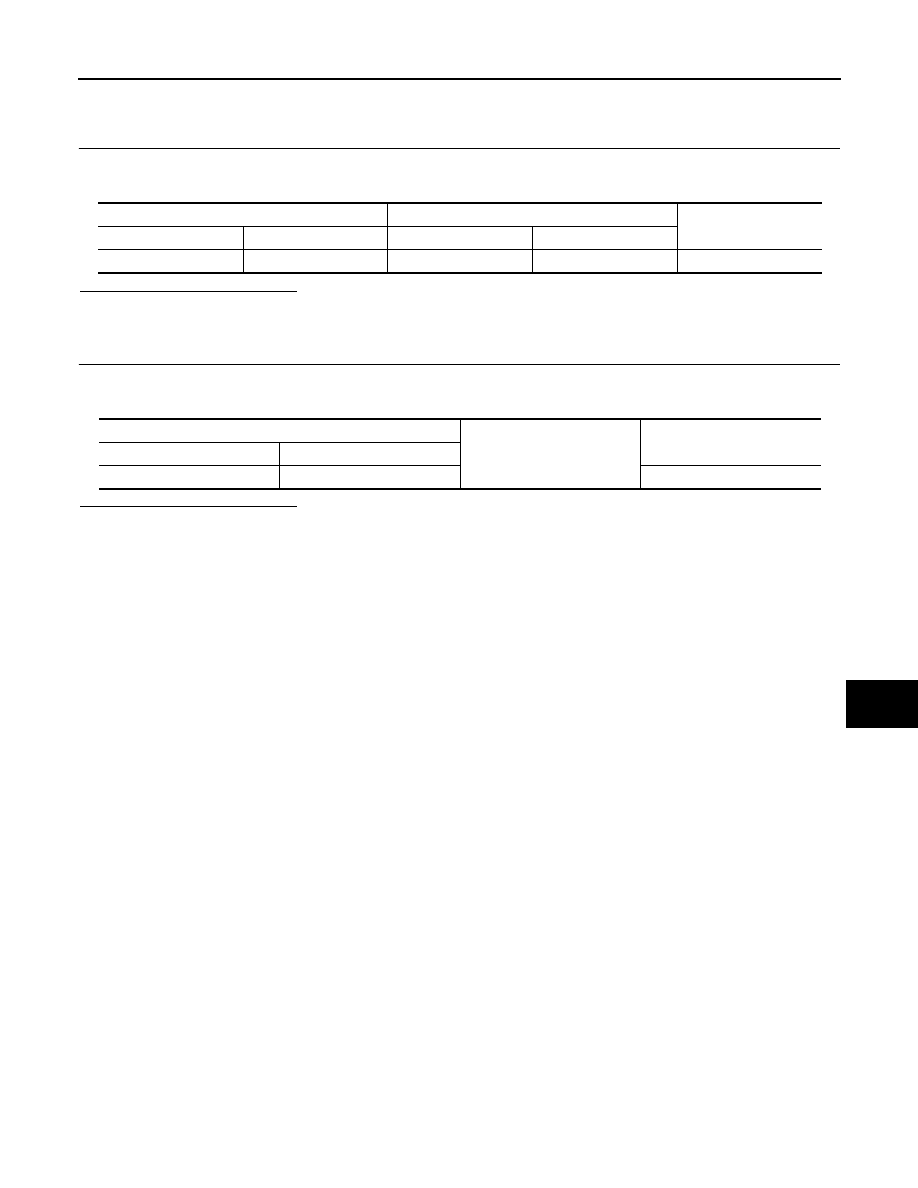Qashqai J11. Roof - part 2

POWER SUPPLY AND GROUND CIRCUIT
RF-17
< DTC/CIRCUIT DIAGNOSIS >
C
D
E
F
G
H
I
J
L
M
A
B
RF
N
O
P
YES
>> GO TO 5.
NO
>> Repair or replace harness.
5.
CHECK SUNSHADE MOTOR ASSEMBLY POWER SUPPLY CIRCUIT 2
Check continuity between circuit breaker harness connector and sunshade motor assembly harness connec-
tor.
Is the inspection result normal?
YES
>> Replace circuit breaker.
NO
>> Repair or replace harness.
6.
CHECK SUNSHADE MOTOR ASSEMBLY GROUND CIRCUIT
1.
Turn ignition switch OFF.
2.
Check continuity between sunshade motor assembly harness connector and ground.
Is the inspection result normal?
YES
>> INSPECTION END
NO
>> Repair or replace harness.
Circuit breaker
Sunshade motor assembly
Continuity
Connector
Terminal
Connector
Terminal
M86
2
R11
7
Existed
Sunshade motor assembly
Ground
Continuity
Connector
Terminal
R11
1
Existed